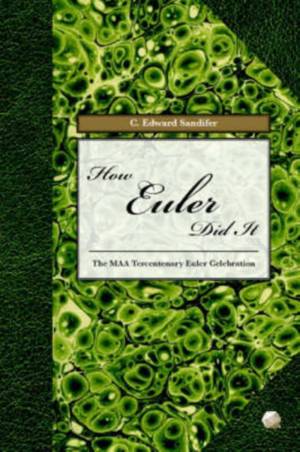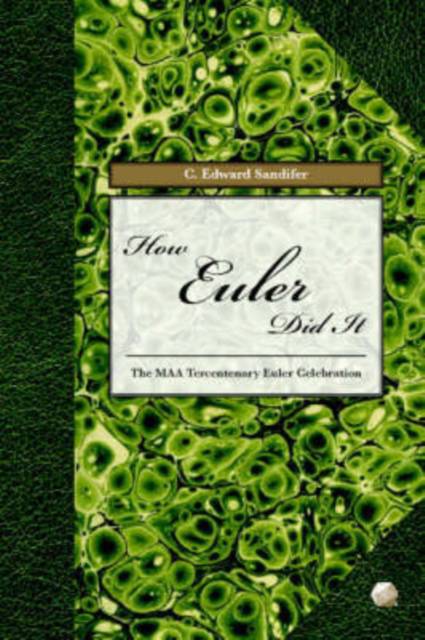
- Afhalen na 1 uur in een winkel met voorraad
- Gratis thuislevering in België vanaf € 30
- Ruim aanbod met 7 miljoen producten
- Afhalen na 1 uur in een winkel met voorraad
- Gratis thuislevering in België vanaf € 30
- Ruim aanbod met 7 miljoen producten
Zoeken
Omschrijving
How Euler Did It is a collection of 40 monthly columns that appeared on MAA Online between November 2003 and February 2007 about the mathematical and scientific work of the great 18th-century Swiss mathematician Leonhard Euler. Inside we find interesting stories about Euler's work in geometry and his solution to Cramer's paradox and its role in the early days of linear algebra. We see Euler's first proof of Fermat's little theorem for which he used mathematical induction, as well as his discovery of over a hundred pairs of amicable numbers, and his work on odd perfect numbers, about which little is known even today. Professor Sandifer based his columns on Euler's own words in the original language in which they were written. In this way, the author was able to uncover many details that are not found in other sources.
Specificaties
Betrokkenen
- Auteur(s):
- Uitgeverij:
Inhoud
- Aantal bladzijden:
- 252
- Taal:
- Engels
- Reeks:
Eigenschappen
- Productcode (EAN):
- 9780883855638
- Verschijningsdatum:
- 30/08/2007
- Uitvoering:
- Hardcover
- Formaat:
- Genaaid
- Afmetingen:
- 177 mm x 253 mm
- Gewicht:
- 603 g

Alleen bij Standaard Boekhandel
+ 108 punten op je klantenkaart van Standaard Boekhandel
Beoordelingen
We publiceren alleen reviews die voldoen aan de voorwaarden voor reviews. Bekijk onze voorwaarden voor reviews.











